I've mostly bred varieties based on american mink, and one combination I've always wanted to see in person is double mink - a rat expressing both american mink and UK mink. I've heard from other breeders who have seen one that it is a metallic grey colour, and quite attractive. So I decided a few years ago that I should get on with it and work towards making some double mink rats for myself.
Theory
In theory, combining two straightforward recessive genes sounds easy enough, after all there are many varieties in the fancy which are made up of two genes: dove, quicksilver, blue point siamese, etc. Unless it's possible to source a rat expressing one gene and carrying the other (non existent for double minks), all one needs to do is mate two together (UK mink x american mink), and then inbreed the F1 offspring. However the odds of getting a double mink in the F2 generation are 1/16, so it certainly isn't guaranteed and a fair bit of luck is needed... I didn't strike it lucky, as can be seen below.
Practice
(F1) My first step was to try and source a UK mink rat, which I found difficult, so I ended up with a UK cinnamon doe who was carrying self instead. She was mated in Spring 2021 with a Zephyr american mink, and their litter arrived, thankfully with a black buck and a black doe in it (Jack and Ada). This litter page is here.
Meraki Jade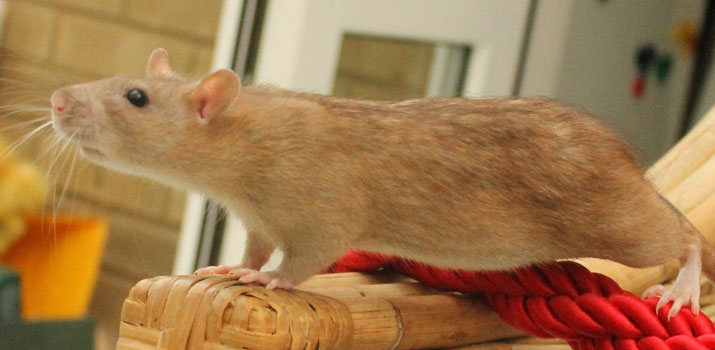 |
(F2) Jack and Ada were mated in Autumn 2021, and although they had UK mink kittens, and an american mink, there were no doubles (the odds of a double were only 1/16, so that's fair enough). However, as sod's law likes to get involved, it turned out that the UK cinnamon I used as a foundation was in fact a low expression pearl.
Pearl is a dominant gene that only affects mink based rats but it has quite variable expression. A fully expressed pearl will be very pale as a self (or a delicate ticked orange if cinnamon), but others can be dark phase pearl looking similar to a silvered mink (or cinnamon with a pale undercoat), and frustratingly, it is also possible to have a rat who is genetically pearl but impossible to spot visually. Other things to note about pearl is that it is linked with (i.e. on the same chromosome as) UK mink and agouti, so inheritance of these three genes is not completely independent of each other, and that it is a homozygous lethal gene meaning if a kitten inherits two copies of pearl it will be reabsorbed in the uterus and never born, so being heterozygous for pearl, statistically a pearl rat should only pass their pearl gene to half their offspring.
I kept the two UK mink does (Nancy and Pearl), despite both being dark phase pearl (their only american mink was not visually a pearl), because they should only pass it on to half of their kittens so not really a major problem as such... or so I thought! This litter page is here.
Nancy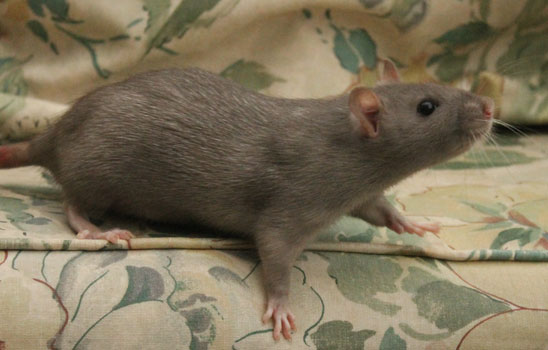 |
Pearl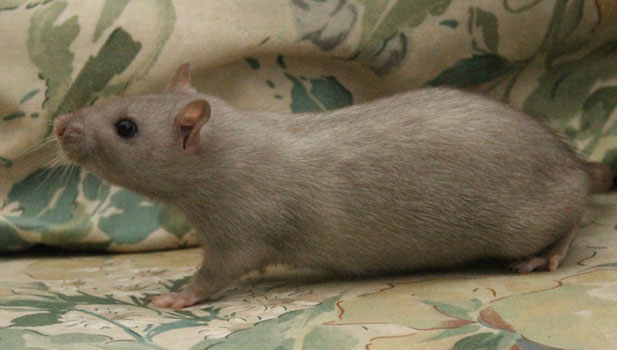 |
I remated Jack and Ada in early 2022 in case this time they might produce a double mink, but no luck, yet again they had a UK DPP doe, and several american minks who were not visibly pearl. This litter page is here.
(F3) My next tack was to see if either of the UK mink girls I kept were carrying american mink. In the Summer of 2022 Nancy was mated to Big Sean (american mink) and no minks resulted, but then Pearl was mated to him, and out popped some american minks (none were visibly pearl) so I kept William, Wendy, and Wilma (my naming theme for this project has been chosen - names beginning with W!). This litter page is here.
William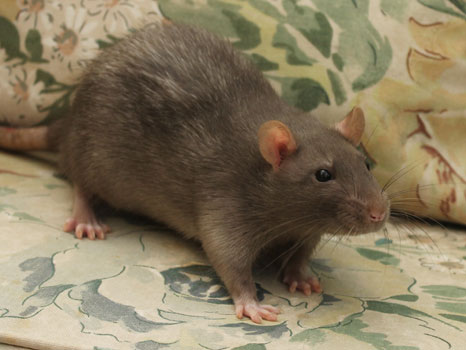 |
Wendy |
Wilma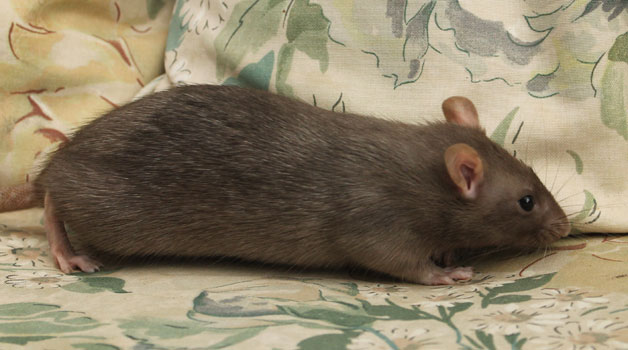 |
(F4) The next step was to mate William with Wendy, expecting 1/4 of the litter then to be double mink. There were 3 double minks, all boys, but also all fully expressing pearl, even though the rest of the kittens showed no sign of being pearl - just an unfortunate coincidence perhaps. If it weren't for the pearl, I would have acheived my goal at this point. This litter page is here.
Wilf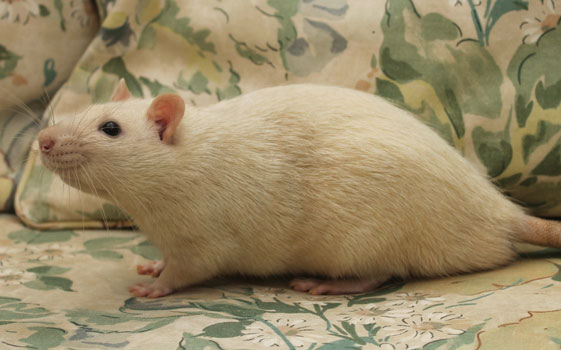 |
Walter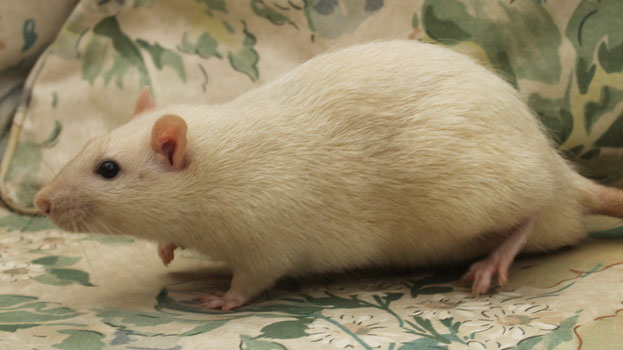 |
I tried mating William with Wilma, and then with Wendy again. All but one (an american mink) of Wilma's litter sadly died around 2 weeks old, but she did have 5 double mink full pearls, and the rest were not showing any signs of being pearl based. Wendy's second litter contained only 3 kittens, all american mink with no sign of pearl.
(F5) To check that my double minks were indeed doubles, and to try and breed away from pearl, I mated Zephyr Wilf to a UK cinnamon from Rivendell, Wanda, in Summer 2023. All the kittens were UK cinnamon, confirming that Wilf was indeed a double mink, and naturally some of them looked dark phase pearl, so I kept three with the darkest roots - Wally, Whitney, and Wednesday. This litter page is here.
Rivendell Wanda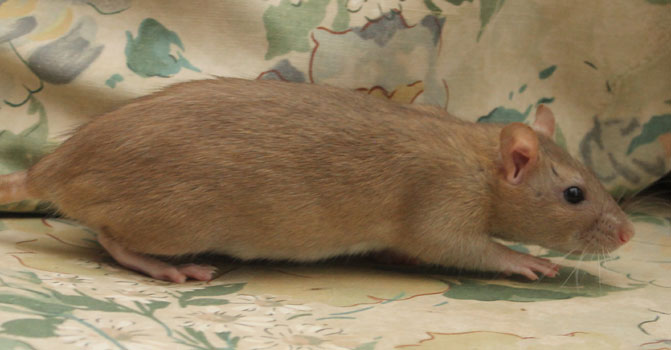 |
Wally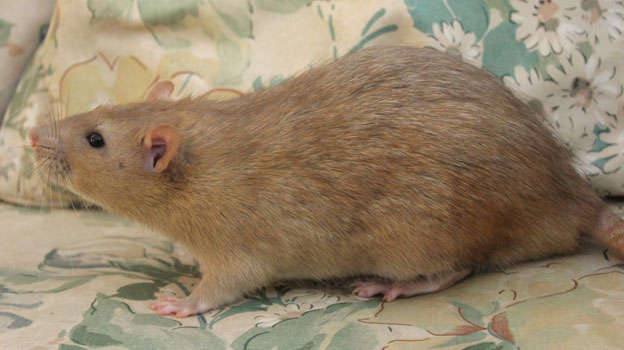 |
Whitney |
Wednesday |
(F6) My next pairing was Walter with Whitney at the end of 2023. They produced a whole litter of pearls (confirming Walter is also a double mink) - 5 double mink full pearls, and 4 double cinnamon full pearls (these were definitely all doubles, because american mink based kittens always have lighter eyes at birth as did these), the other 6 kittens were all dark phase pearl UK minks and cinnamons. I kept a double mink pearl buck and doe, Wilbur and Winter, and a double cinnamon pearls, Willow. Given that the whole litter was pearl, it's probable that Whitney is a dark phase cinnamon pearl, and the large litter implies that none of the embryonic kittens received two pearl genes, and they were shared equally across the whole litter instead - a highly unlikely result (the chance of a non pearl was 1/4, and a non pearl double was 1/8), but statistically possible. This litter page is here.
Wilbur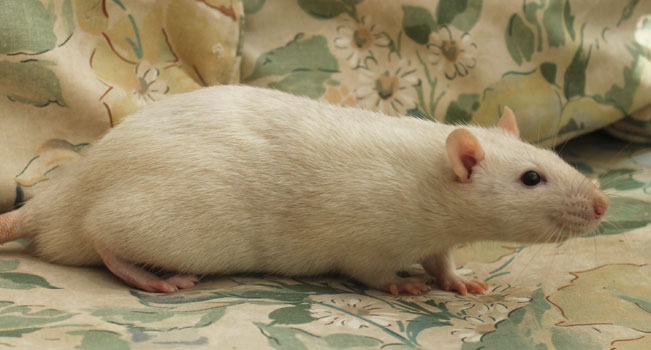 |
Winter |
Willow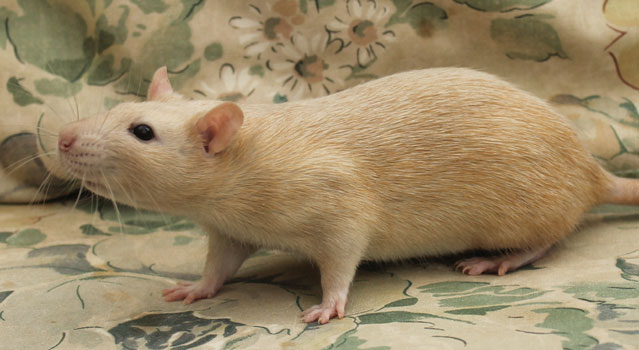 |
I then mated Wally and Wednesday in the Winter of 2023, who produced 4 full pearl doubles (1 double mink and 3 double cinnamon), but also UK minks and cinnamons, some who were visibly dark phase pearl, and some who did not appear to be pearl at all (suggesting either Wally or Wednesday may not be pearl - meaning the chance of a non pearl double would have been 1/8). I kept two double cinnamon pearls, Watson and Wixadora. This litter page is here.
Watson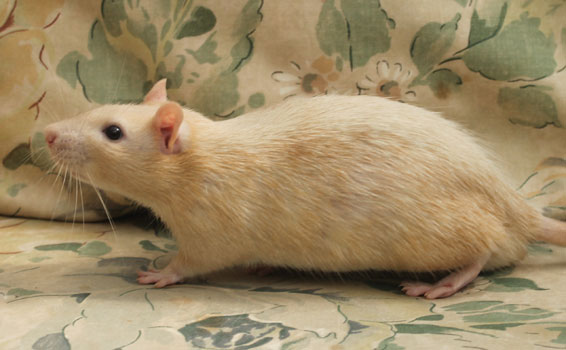 |
Wizadora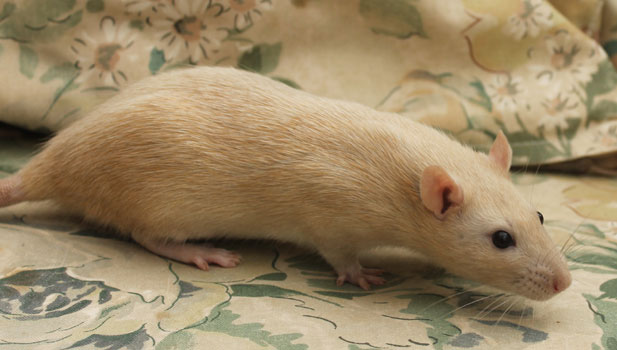 |
(F7) In Autumn 2024, mating attempts with Winter and Willow both failed, but Wizadora was successfully mated with Wilbur, and instead of the expected 2/3 pearl and 1/3 non pearl, I got 10 fully expressed pearls (6 double mink, 4 double cinnamon) and two who appear to be siamese. The siamese are not showing any signs of pearl although it is possible that the siamese coat may not allow pearl to be expressed so they could still be genetically pearl, but either way I won't be keeping them as I don't want to encourage another recessive in the mix. I kept a double cinnamon pearl buck, Warren, and a double mink pearl doe, Whoopi. This litter page is here.
Warren |
Whoopi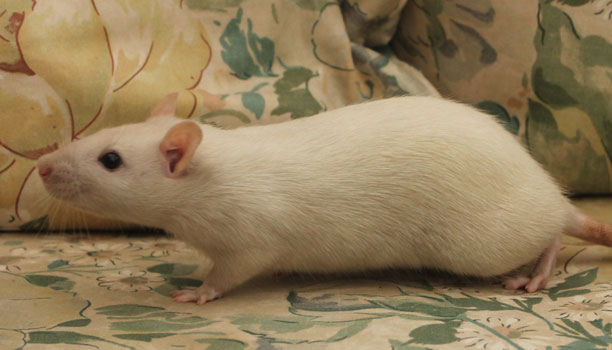 |
I also mated Wilbur with a UK cinnamon doe who hopefully is not a pearl, aiming for some non pearls. Two of the 6 kittens (all UK cinnamon) have distinctly white undercoats so I'm hoping the others will not be pearl and have kept a pair to mate together in Summer 2025 - Wesley and Wallis. This litter page is here.
Wesley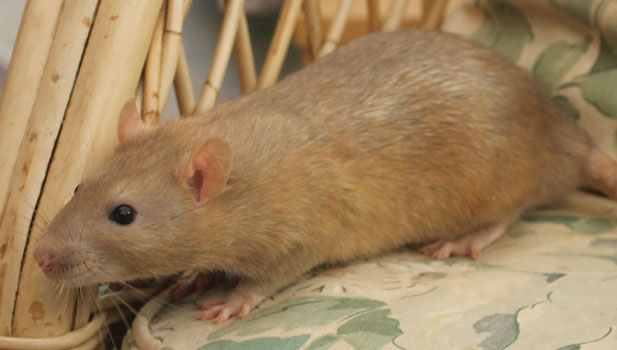 |
Wallis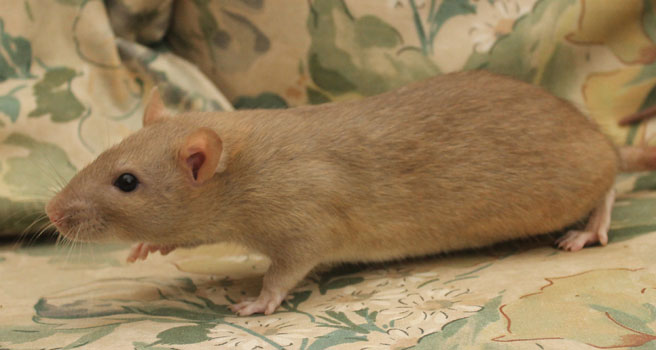 |
Wizadora had a second litter in early 2025 with an american mink buck from my main american line (free of pearl), they had a litter of minks, none of which appeared pearl at all. I kept a doe, Whisky. This litter page is here.
Whisky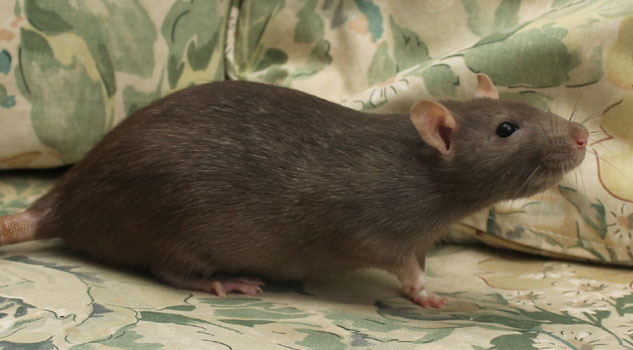 |
(F8) In Summer 2025, Whoopi and Warren had a litter of 12, consisting of all pearls (double mink and double cinnamon) with one siamese. I kept two bucks and two does, all double cinnamon pearls - Wurzel, Womble, Widget, and Wotsit. This litter page is here.
Wurzel |
Womble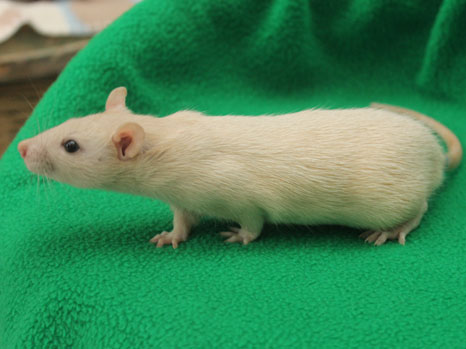 |
Widget |
Wotsit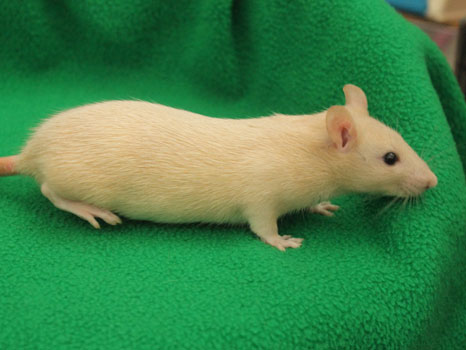 |
Wesley was mated with his sister Wallis, and with Whisky, but unfortunately Wallis' litter included some babies with a condition called fatty eye, a benign tumour which doesn't affect the rat, but it means I will not be continuing with this strand. The litter of 16 also contained a lot of Red Eye Dilute (buff/topaz) based rats, and these didn't show up as being obviously pearl. Also, none of the non RED rats looked unusual, so I concluded that none were double minks. This litter page is here.
Whisky's litter included the expected range of colours, but again, none that looked unusual, so if any were non pearl double mink or cinnamon, then it wasn't apparent. Out of 15 kittens, 4 were double mink/cinnamon pearls, and 1 was a dark phase UK pearl, the others did not appear to be expressing pearl at all. This litter page is here. I didn't keep any of these kittens doe to their potential for producing more fatty eye in the future.
Summary of results so far and conclusions/hypotheses:
Every single double mink/cinnamon produced so far has been a fully expressed pearl.
Every single american mink produced has shown no sign of pearl, although at least some must have been.
Some UK mink/cinnamon have been visibly DPP, some have been pearl without any visible expression, but none have been full pearls.
This suggests to me that having two minks expressed (UK mink and american mink) means that pearl reliably has full expression - this is helpful for a pearl breeder because breeding for fully expressed pearl can be rather hit and miss normally.
It is possible to have american mink pearls but the fact pearl has not shown on any of these american minks makes me wonder about the possibility there could be different pearl genes, and this pearl gene only expresses on UK mink based rats, but that is still very much just an idea.
The odds of repeatedly getting so many pearls in each litter are exceedingly low, although still statistically possible, so I conclude I am either just very very (un)lucky, or something else is going on that is reducing my chances of getting a non pearl double mink based rat (I haven't worked out what that could be though, unless doubling the mink somehow means homozygous pearls are no longer fatal).
I note that either the pearl gene was lurking in my american mink line without ever being expressed (potentially possible given that none of the american mink pearls in this project have expressed it at all), or it originally came from the foundation UK cinnamon (which is more likely since she did have some DPP relatives). Assuming pearl came in with Jade, it would have been linked with self, meaning the gene 'package' would have been 'a/m/pe', and these would remain together unless a crossover event ocurred (where the chromosome breaks and recombines with the other half of its paired chromosome during conception), which can happen but doesn't often make a difference if the genes are very close together. I'm not sure how close these three genes are, but there is a fair chance that the pearl is still associated with self in this line, as it is a known hurdle for pearl breeders trying to create a cinnamon pearl line from a mink pearl foundation.
Future plans:
Given the low chance of a crossover having occurred, I would like to mate two double cinnamon pearls together, in the hope that any homozygous double cinnamons (which should be 1/4 of the litter) will not have the pearl gene. One of the does from Whoopi's litter will be mated with another double cinnamon pearl in the Spring of 2026.
I'm enjoying double cinnamon pearl, and will endeavour to maintain a line of them anyway, so the other doe from Whoopi's litter will be mated to a buck from my core line for a little more genetic diversity.